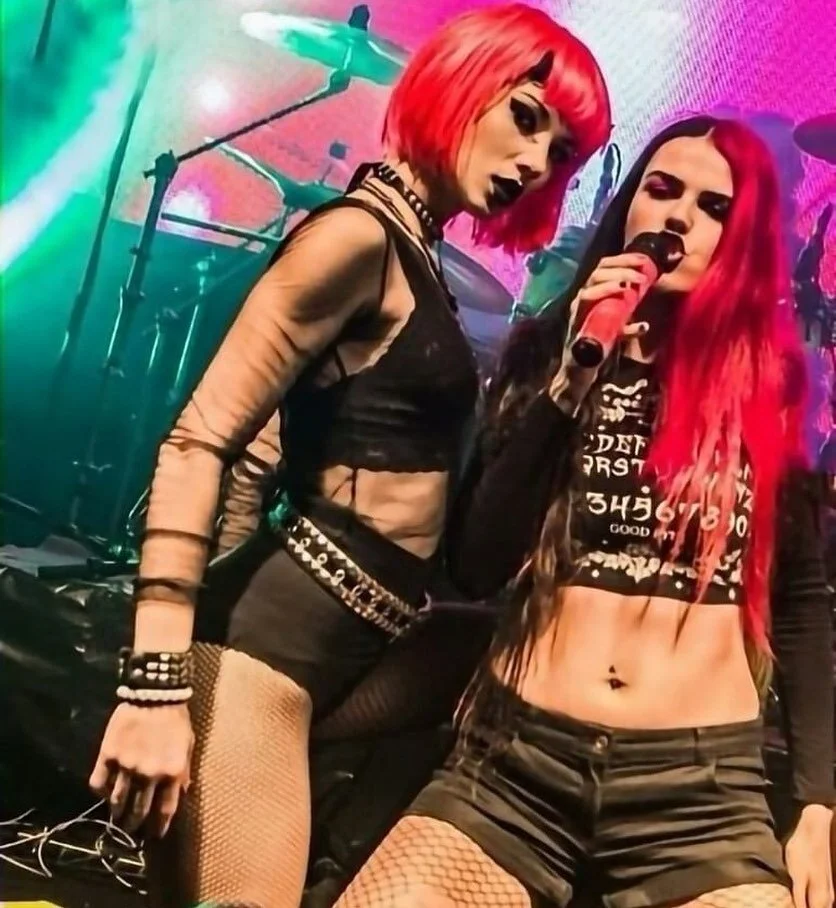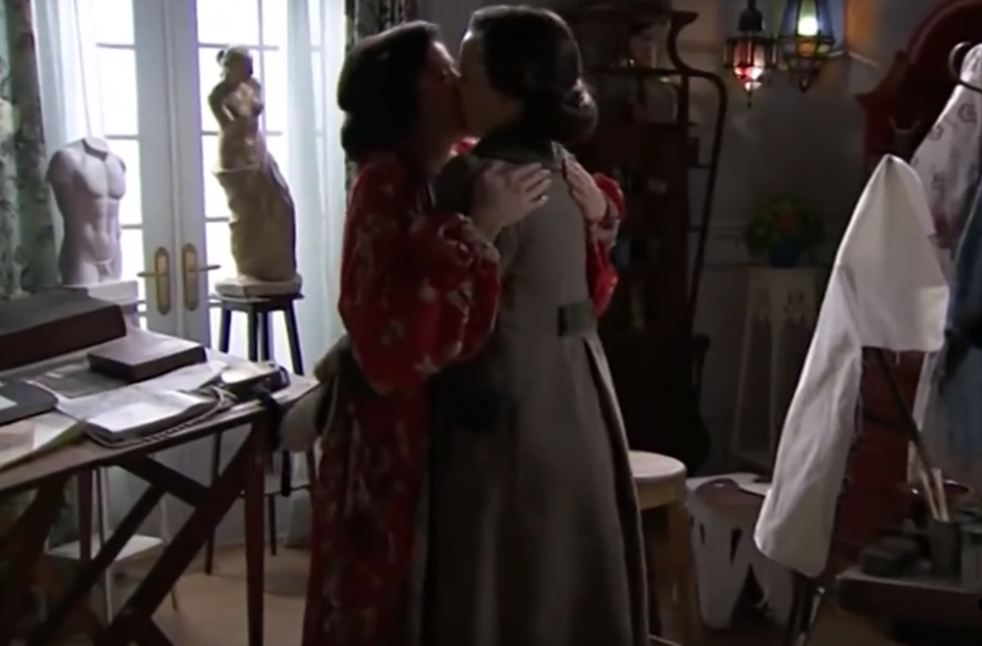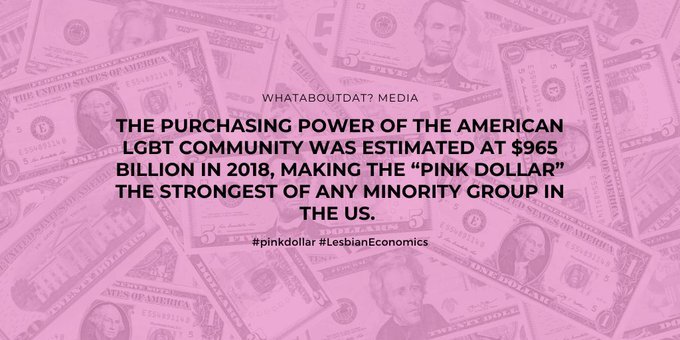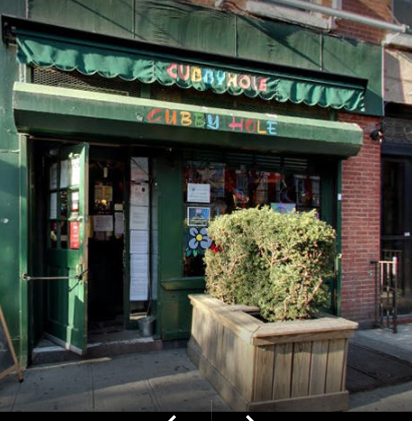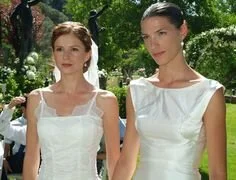By: Catalina Fuentes & Karen Frost
Here at What About Dat? we’ve written a lot about Maitino. We’ve written about the world of the Maitiner fandom, and we’ve talked to Ylenia Baglietto (Matie Zaldúa). But, as has been repeated ad nauseum these last two weeks, Maitino is not just one actress. That’s why we couldn’t wait to take a closer look at Camino Pasamar and the woman who brings her to life, Aria Bedmar. In a pleasant conversation, she told us about how it’s been to play this role, her wishes for the future of the character, and more or less what’s coming in the coming weeks. So buckle up and enjoy the ride!
Aria plays Camino Pasamar, who transformed from a shy girl injured by a terrible trauma in her past to an icon of rebellion and a groundbreaker of the timeperiod in which the story is set. Having divested herself of learned social prejudices to free her heart, she ended up in a clandestine relationship with Maite, an older woman who was also her painting teacher. Camino, like Maite, conquered the Spanish and international public to the extent that there are Instagram, Facebook and Twitter accounts dedicated to the couple in different countries and in more than nine different languages, of which Russian and Chinese are just two.
Why are we so interested in writing about Maitino? Well, because it’s fantastic that a daily series (a soap opera), which is broadcast during family hours, raises such a controversial issue. In that sense, a not insignificant detail is that the story is set in 1914 and it is striking that, a little more than a century later, being a lesbian is still difficult. And while we have made progress in dealing with this issue in civil society and legal rights, the annoyance generated by the departure of Maite, (temporary or permanent? At What About Dat? we are inclined towards the former) shows us clearly that we still have a long way to go, since the frustration comes directly from the large number of women, of different ages and countries, that feel reflected on the screen.
One of the things that has galvanized social media the most, in addition to shy Camino’s fierce awakening, is the naturalness with which Aria lives her life, her sexual orientation and her daily life, which has made her a role model for many young women around the globe. After all, "Love is Love" is more than a slogan, right?
Before the world shut down, Aria's day was very hectic, but between filming and filming she answered some questions with her usual sympathy and good vibes. Here is what she told us:
1. You mentioned in another interview that when you were growing up there wasn't much LGBTIQ representation. What are your top three LGBTIQ stories that you have seen on TV and are currently watching any stories?
Answer: Well, as I have said at other times, I have not grown up with a big influence of fiction stories of any couple that is not heteronormative, so it is difficult for me to find many influences that I may have or role models. But that I can highlight in Spanish territory Fer and David's story on “Physics or Chemistry” (“Física o Química”), which I have seen a lot of times, not only when they aired the series, but also when the series ended I kept watching their story on YouTube. I have seen it many times. I loved it. And also on the international scene, I also watched the series “Queer as Folk” in its entirety and I loved it. It dealt not only with homosexuality in men but also in women because there was a couple of girls. And, well, in fiction I have a bit of those role models and then among real people, people who are part of reality and not fiction, well, internationally I have the great Ellen Degeneres for example, or Ellen Page, too. I love Ruby Rose. People who work so that the LGBT community continues to have representation and is so included that the time comes that is not…that it is not worth naming, that it is part of normalcy and that's it. And in the national field, it suddenly occurs to me Mónica Naranjo, who is a great representative of the LGBT community, who was married to a man for a long time—the truth is I do not know her personally, I could not say if she really is bisexual or is... I really don't care, I don't care what sexual orientation she has. It seems to me that in her work, professionally, she supports the LGBT community a lot, so she seems very worth mentioning to me. And apart from those people, well, maybe if I think about it a lot longer, I will think of more role models, but, well, in general, those would be the people who would seem the most…to me as the role models continuing to fight for the LGBT community.
2. What has been your favorite thing to play Camino Pasamar?
Answer: What I have liked the most about playing Camino...possibly is in her initial stage of muteness. It seemed to me a beautiful challenge, so I think it could highlight that a bit, the issue of how to communicate onesself with the rest of the world when you do not have speech. How to say, “I am hungry,” “I am cold,” “I do not like this,” “I am uncomfortable,” “I want to go,” “Give me a hug,” “Leave me alone.” How to say all that, without saying a single word, seemed to me a complicated job, but very, very nice to do. And then later on when Camino has been growing and evolving, well, to do precisely that evolution. This evolution from a fragile girl, from a traumatized girl, from a weak girl, to suddenly finding strength and finding a way to move forward and that willpower to continue and survive.
3. In what ways do you think you are similar to your character and in which ones do you think they are not?
Answer: In what way do I seem like Camino and in what way not? Weeeeell, I think one of the points we have in common, apart from the fact that we are in love with a woman—in real life I am married to a woman. I have been with my girl for ten years, we married a few months ago—apart from that, at a stage in the past both of us, well, have had a very difficult time with anxiety, with uncertainty, bordering a little too on depression, anxiety attacks, fears, continually afraid… Mmm, well yes, fortunately or unfortunately I think almost everyone has been able to go through such a stage, no? A difficult stage, a hard stage. Well Camino and I have gone through it and I think that is also what can bring me closer to the character and that in some way helped me to give truth to the story. That is to say that I also went through the same thing. Fortunately, not rape, but yes... Well, for other reasons I also passed a rather bad stage and it is to understand the character from there, from personal experience.
4. What would you like to see happen with Maitino in the future? And more specifically, which scene has not yet been filmed that you would like to be filmed?
Answer: What would I like to happen with Maitino in the future? Weeell...I am one of those who think that brevity is good, it is twice good, at the same time that it is twice brief, but I think it is important for the story to have a... a good closure, so that it has a good story. In general, it would seem to me to stay in one, because right now we are at a point that Maite is gone and Camino is alone, without her and with Ildefonso. She does not know very well what she is doing with her life, but, well, is in that uncertainty, in that solitude. I would very much like Maite to come to rescue her from the well she is getting into and to go to Paris together to live, to a country where they can be a little freer. But do not forget that we are talking about 1914, that independent of the area of the world where it is there is always a certain rejection of a female couple, but if at least they would be freer than in Spain, then, well, yes, I think so, that it would be very nice if it happened.
And a scene that has not yet been filmed but I would have liked it to be filmed, ideally I would love that suddenly Maite and Camino kiss each other in the middle of Acacias, in the middle of the street, that all the ladies would see it. It would seem to me very scandalous and very fun to shoot, but I don't think that would happen in 1914, no matter how hard you try to be liberal, you wouldn't be so reckless to do it in the middle of the street, because based only on suspicion they put Maite in jail. I don't want to imagine what would happen if they really kissed each other in the middle of the world, but it would be very funny to film.
5. What would you like to do once you have finished your time at "Acacias 38"?
Answer: Well, once I finish “Acacias 38,” the first thing I would like to do is rest a little, because a daily series is very hard, very hard to shoot, to work, to study, so I think the first thing would be to rest a little and later, once I’ve regained strength, I would love to continue working both on television and in movies, make more series, perhaps weekly that are a little less hard, perhaps for some time, and movies. Any project that comes, in short, if anything comes, everything that comes will always be welcome.
6. You've been doing a lot of interviews as well as Instagram Live sessions with Kenzy. What is the question they haven't asked you and who do you think the Maitiners would like to know the answer to?
Answer: A question that they have not asked me or Kenzy is difficult to answer because they have really asked us a lot of things, and in fact one of the most repeated is always, "And Kenzy, you are not jealous that Aria kisses Ylenia in a scene?” or with her or with anyone else really. They ask me that question a lot and Kenzy always answers it with all the good vibes in the world and tells them of course not, that it is part of my work and that that will never suppose any kind of jealousy between… But something that we have not been asked, the truth I would not know what to say. Something that we have not been asked and that we want to be asked or that we think you may like the answer…I would not be able to find a question. We have been asked a lot and if there is something they would like to know that they have not asked or that they do not know, we are free to ask what they want and we will answer it without problems.
7. After the end of the character of Maite Zaldúa in the series, all the Maitiners are crying in all corners of the network. Considering that the parting sequence was changed to add the red bow and thus leave an implicit promise and an open parting, do you think the return of Maite’s character is a real possibility?
Answer: I think Maite's return is a real possibility, yes. I think so, mmm... I think it can really happen. I think the writers and producers of the show listen to the fandom a lot. They listen to the Maitiners a lot, and the Maitiners are really looking forward to it, so I really think it can happen perfectly.
8. What do you think will come to Camino in the future? We know that in the immediate moment she will get engaged and get married, but beyond those key elements to bring a much more dramatic arc, do you think that love triumphs in the end?
Answer: Hmm, Camino’s future… Well, Camino’s future is a bit black. It is a bit sad. Difficult times are ahead for Camino, but I want to believe that yes, that in the end love will triumph. Hopefully yes. Really we don't know yet...but I have hope that yes, that all this suffering that the Camino is going through and that the Maitiners are also going through and that…and that there is still a little bit to go through, well... Well, I think that the end is going to have a good turn and that everything can end well, I hope.
9. How would you describe yourself to someone else?
Answer: Weeell I do not know. The truth is no one has ever asked me. I imagine that I am a person who is usually positive. I usually have good energy, except when I am very tired, then I am very quiet and I dedicate myself to trying not to fall asleep around the corners (I could fall asleep on top of a tree; it is very easy for me to fall asleep). I do not know, I suppose that I am an open person, I hope friendly, and that I always try to give my best. And when I see that someone needs help, I always lend it within my possibilities. I lend it without hesitation. I am very much a fighter of injustices. What else? More or less that, a person with a good energy, who fights for what she feels, for what she believes to be right and with few fears, truthfully. Always with the will to move forward, to not be afraid of change and that. Very much for changes. I love changes, I love getting out of my comfort zone and, well, more or less that. I wouldn't know much more to say.
10. When you are not working, what do you do to have fun?
Answer: Well, when I'm not working I love spending time at home, because I spend so much time away from home that I love being at home with my doggies, with my girl. I love watching movies on the sofa, I love playing video games (PlayStation), I love reading... I like any activity I can do indoors, but, well, at the end, when you spend two days at home you already fancy the third, so when I'm not working and I'm tired of being at home, mmm, I really like going for a walk. I love taking walks in the sun, with my doggies and I'm… Spending time with my girl, really more or less that's my life.
11. In the Acacias 38 series, the Red Thread of Fate was given as a symbol of Maitino. In another interview you said that the woman of your dreams is now your wife, when did you realize that Kenzy was your red thread?
Answer: When did I realize that I share a red thread with Kenzy, with my wife? What a beautiful question. How beautiful. They have never asked me. Perhaps this is a question that I would like to be asked or that I think the Maitiners would be interested in, since this is a beautiful question. When did I realize? Well there really wasn’t a single moment, from now if not now. Our story began when we were very young. She was just 18 years old, I was not yet 15, we were very, very young...mmmmm...and when we met and started dating, I did not have the feeling that this was going to be the person with whom I was going to spend the rest of my life. No, she was someone who amused me, who did me good, and then we were together as long as we wanted to be. And in fact in our history there have been several stops, we have broken up several times, we have returned, because, well, I consider that we met very young and in a stage that is of personal growth, of self-discovery, so it is very difficult to support yourself when you are at that age. In adolescence you do not understand yourself, nor the other person, right?
We went through some difficult stages, but, well, once we passed adolescence, as if we understood that we were the person for each other and possibly that moment, we could place it—at least from my point of view, because Kenzy perhaps lives it otherwise, but I lived it—once we were already settled in Madrid—because we met in Almería, living in Almería—and when we came to live in Madrid (it will be about five years ago)… I believe that in that first year of living together that was very difficult. The truth was very complicated, but once we had passed that first year of living together and began to relax and began to finish connecting, perhaps it was then I realized that she was the person with whom I wanted to spend the rest of my life. With whom I want to spend the rest of my life and who I want to be the mother of my children. So I think it could be there, perhaps in the second year of living together, when we everything fit.
12. You have shared the stage with your wife on several occasions. Have you thought about dedicating yourself professionally to singing as a parallel career to acting?
Answer: Ooof, no, no, no. That's not my thing. Have I ever been able to imagine it? Well yes, who hasn't? Have you ever taken a hairbrush or a deodorant in front of the mirror and started singing out loud and wanted to be a singer? I think everyone has once. But no, no, in reality there was a time when I was asked about an opportunity I had, but finally it did not happen and I am glad. The truth is I am very glad that in the end it did not turn out well, because although I learned a lot from that experience, ehhh... I think I would not be happy and I would not feel completely fulfilled if I dedicated myself to singing. I like acting and singing as a hobby too much...mmm… I can hone, I can sing, but it realistically is not something I want to dedicate myself professionally. If I wanted, for example, it would seem very nice to do a musical in which... Well, I was in a children's musical when I lived in Almería, which was like a few months that I was working with them, and the truth is that I liked it, very, very much. It seems to me a wonderful experience: singing, dancing, acting on stage all at the same time. I find it wonderful, but it seems to me a very complicated world—very, very complicated—and I prefer to leave it to those who really are singing professionals. That amazes me a lot: people who are able to control the voice so much. But no, no, I am not a professional singer.
13. In a previous interview, you pointed out that you never had to hide your sexual orientation, how has it been for someone who has enjoyed that freedom to give life to a love story that must live in the shadows?
Answer: This, too, seems like a very, very interesting question. Everyone tends to think that when you like women and are a woman then you can act any lesbian relationship in acting, but in reality it is very different, because my real story has nothing to do with it. My real story I have never hidden from anything. Mmmm... So it was an added difficulty. Maybe what I have been able to do the most is to understand the time perfectly. Understand that it is 1914 and not 2020, and maybe if there can be a connection point where, well… When I started with my girl in 2009, in Almería, of course people were not as open as they are today in Madrid. It has nothing to do with it, if it is true that the mind was much more closed, but more that to hide we had to measure a little and not expose ourselves too much, something I consider is not the same as not exposing ourselves to hiding, because I did not have to lie, I just did not have the need to tell who I did not feel like telling that I was with a woman. It is something that I have chosen and that my partner has chosen to say, but we have not had the need to proclaim it to the four winds.
Yes, there has been a time that we have been able to hide it with the grandparents. That of course is something that is good. My mother asked me, she said, "Look, they are people from another era who do not understand." Sometimes we have been able to test the waters of what would happen if they know about it, and then suddenly they didn't react well, so okay. As they are not people that I have had to live with, they are not people that I have met in my day to day, but simply when a grandparent visited. Because then I had to abide by the visits of the grandparents and how I felt when I I couldn't kiss my girlfriend in front of my grandparent for what they might think. That has been the closest thing to hiding. But they have been situations so specific, so specific that...that no, they did not hurt me in my day to day. But, well, maybe yes, the common point between a relationship such as my personal one that I have not had to hide and one that I have to play that, if it must be hidden, it is there, right? At those points where the grandfather or grandmother who does not know, then hide, but perhaps it was the closest thing I could live there.
14. Someone once calculated that less than 10% of same-sex female couples on television worldwide get happy endings, and almost 30% of queer female characters are killed. Do you, as an actress who plays Camino, have the ability to fight for a happy ending for Maitino, or the fans?
Answer: Fewer than 10% have a happy ending? Wow, I did not know that statistic and it seems brutal to me. It seems brutal to me. Mmmm… Would I would fight for a happy ending for Maitino? Of course. Of course and I know that fans, too, fight for it. And I trusted the ability of the writers to obtain these opinions and take them as a reference and not forget them. Take them as something to consider, and that from there they create the possible ending for Maitino. Because, well, it is not a question of it being an impending ending, it is simply that it is a story that at some point will have to end, and then we hope that on that day, the day that the end of Maitino comes, that it will be a happy ending. Please, trust the writers.
15. The chemistry between you and Ylenia Baglietto is something celebrated internationally by fans, in addition to your acting skills. Do you think being part of the LGBTIQ community helps you better interpret Camino? If so, how?
Answer: Okay, the good chemistry with Ylenia is almost inevitable. In other words, Ylenia is a wonderful person, with a positive energy that radiates from her wherever she goes, and it is impossible not to have her, not to let that energy eat you, because she is wonderful. She is wonderful. So, well, apart from that chemistry, does being part of the LGBT community in my real life help me play it? Yes, I suppose it does. It helps me when there must be moments of passion that are unchecked, right? Without it, it gives me the feeling that I am kissing a wall. No, I am kissing a person, a person who has feelings, who has emotions, who has a beating heart, who has body heat. That I hug her and feel things, well, I suppose that, that being LGBT, yes, can help me, but I think that any actor, any actress, who really likes the world of acting and feels fulfilled with it can get to the same point. So it can help, yes, but I think that, that it is not necessary to be part of the LGBT community to play a character that, if they are, in the same way that it does not take many things to act…you do not need to be a drug addict to play a drug addict, is what I am trying to say. Mmmm, I guess it helps, but it's not necessary either.
16. Camino has discovered herself as a confident, fighter, feminist and certainly liberal woman for her time,that combined with your real life has made you a reference for many queer young people of our time. What message would you give them?
Answer: Okay, every time I read the word “role model,” or sometimes I read the word “LGBT icon” to describe myself, it is a little scary. (Laughter) Because I am usually a person who does not have much filter when speaking, and sometimes I say things that can be misunderstood or that can be taken literally. In short, it is always a little scary, no? But, well, leaving that fear aside, a message that I could say to the girls and boys who belong to the LGBT community and to those who do not, to all the people who advocate for freedom, what advice would you tell them? Well, I would give them the advice to continue fighting for what you believe, let nothing and nobody stop you. Fight for what you consider right, but never forget our own safety.
That seems very important to me: not only to send a message to fight for freedom, but also to be smart and not to expose ourselves to gratuitous danger, just to fight for our ideals, because perhaps they give us the reason, but when they give it to us we are already beaten, or they have beaten us or we have exposed ourselves to a dangerous situation. For example, in the feminist sphere there are many times that they advocate the desire to go out alone at 4 in the morning and that no one hurts me for it. “I want to be free and not be brave.” That is great and of course I think so, I am the #1 feminist, but girls, boys, let's not lose direction. Let's not go out, girls, in this case talking about feminism. Let's not go out alone at 4 in the morning, a Saturday on a dark street, because, although it is unfair, possibly what is going to happen is a scene of violence or a scene of rape. And although it is unfair that can happen and can put us in danger... Mmmm, the same thing happens with the LGBT community. If we see a person who is not tolerant of that, who views our way of being or our way of living as despicable, of course that does not prove him right, of course he is not right, but that does not mean that we should be fools to expose ourselves and say (things) in front of that person or kiss a person of the same sex in front of that person, because what we are doing is exposing ourselves to danger. Let's be smart. Let's fight for our rights but without putting ourselves in danger, please.






